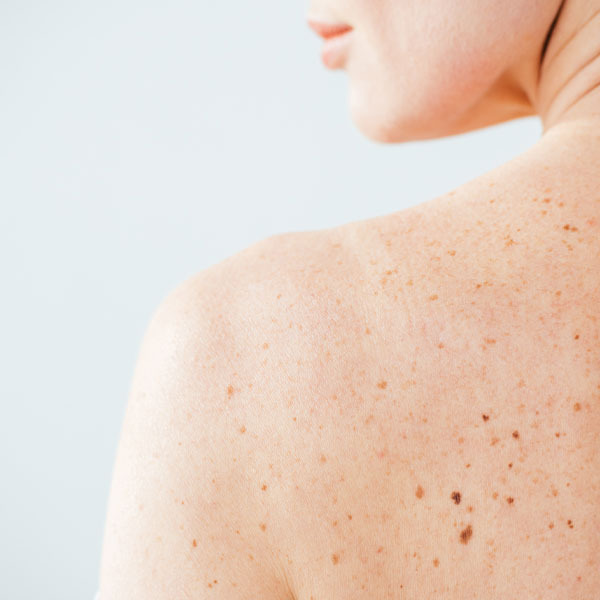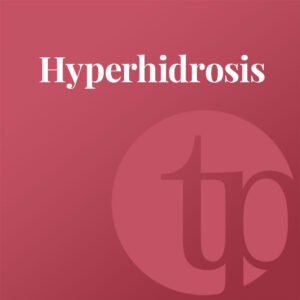classical dermatology

As a trained dermatologist, Dr Pavicic will be happy to deal with your medical skin problems. With our great experience and empathy, we develop the right therapy for your findings.
ACNE TREATMENT
- Mild acne (blackheads, a few inflamed locations)
- Superficial chemical peeling (e.g. Milk Peel)
- Regular deep cleansing
- Essential: Proper cleansing and skin care for use at home
MODERATELY SEVERE ACNE (MULTIPLE BLACKHEADS AND INFLAMED LOCATIONS)
- Topical medicines, which are prescribed for you after a thorough investigation and which depend on whether a keratinisation disorder or inflammatory lesions predominate
- Possibly also systemic “acne antibiotics“ in the meantime
- Accompanying dermocosmetic support
SEVERE ACNE WITH INFLAMMATORY NODES AND CYSTS
- Systemic therapy (often also isotretinoin) to stop the inflammation in a timely manner and to prevent scars
- Accompanying skin care in the home (also to relieve concomitant symptoms, for example dry mucous membranes)
ACNE TARDA OR COSMETIC-INDUCED ACNE
- Precise analysis of the causes, concomitant cosmetic treatment such as chemical peeling, CORRECT skin care (no “rich” gunk)
TREATMENT OF ROSACEA AND SENSITIVE SKIN WITH A TENDENCY TO REDNESS
Depending on the stage of the rosacea, we primarily treat the small vessels on the cheeks and nose with various laser therapies (IPL Max G; Nd-YAG)
We also create for you a cleaning and skin care programme tailored to sensitive rosacea skin, which you can use at home.
We also use laser to treat inflammatory papules and pustules and supplement the treatment with topical medicines such as metronidazole or azelaic acid.
Where the condition is more severe, with numerous inflammatory locations, systemic (e.g. low-dose doxycycline) and topical treatment with final vascular laser treatment has proved itself to be effective.
Rhinophyma, colloquially known as “bulbous nose” or “schnapps nose” can only be treated surgically.
CARE RECOMMENDATIONS FOR SENSITIVE ROSACEA SKIN
Skin care products should not be greasy and should only contain a limited amount of selected dermocosmetic active substances, which strengthen the weakened skin barrier, moisturise and calm the skin as well as having vessel-stabilising and anti-inflammatory activity.
Ingredients that stimulate the circulation as well as active substances for “purifying” the skin should be avoided. Skin creams with a green tint are suitable for concealing redness of the skin. Consistent sun protection is also important in every case.
FURTHER INFORMATION ABOUT OVERSENSITIVE SKIN
Sensitive skin is not a clearly defined entity, but a skin condition that is characterised by a low tolerance threshold to exogenous and endogenous irritants. These can be, for example, UV light or cold, frequent showers or certain skin care products and even stress.
Subjective symptoms include a sensation of tension, stinging, burning, tingling or itching. Objective symptoms such as redness, flaking, roughness, blisters, wheals and small pimples can occur.
WHEN THERE IS TOO MUCH SWEATING
Normally sweating is a vital process. In this way, the body rids itself of too much internal warmth and does not become overheated. In the process of sweating, the nerve ends send electrical impulses to the sweat glands, which causes them to produce sweat and to deliver it via small ducts to the skin surface. But two and a half million people (1-2%) in this country also sweat far too profusely on completely normal days.
Hyperhidrosis is the medical term for pathologically increased sweating (Greek: hyper = too much, hidros = water). Some people sweat excessively over their whole body (general hyperhidrosis). Others sweat excessively only in some locations on the body (localised hyperhidrosis), mostly the armpits (axillary hyperhidrosis), hands or feet (palmoplantar hyperhidrosis) or also the head.
OFTEN A DEODORANT IS NOT ENOUGH
Most commonly an attempt is made to prevent sweating of the hands, feet and armpits by using roll-ons or creams containing aluminium chloride salts. Aluminium chloride salts (generally 10-30%) should block the excretory ducts of the sweat glands and thus restrain the flow of sweat. The products are available in various strengths. Since the skin is already very sensitive due to sweating and the products are irritant, the skin can become red, itchy and oozing. However, these measures are often simply insufficient.
NON-SURGICAL PROCEDURES
Treatment with botulinum toxic A is today surely the safest and most reliable treatment for localised sweating. Botulinum toxin is injected into the skin through the sweat glands. This is done under local anaesthesia. Botulinum toxin inhibits the release of the neurotransmitter acetylcholine from the nerve endings. Thus the sweat glands do not receive an “on” signal and sweat production is decreased. The nerve endings die off. As a rule, the treatment must be repeated after six to nine months because the damaged nerve endings grow back. If requested, private health insurance funds will very often cover the costs of the treatment.
SKIN CANCER PREVENTION / BIRTHMARKS
Screening for skin cancer and follow-up checks enable the risk of skin cancer to be greatly reduced. Malignant skin lesions and/or precancerous stages of skin cancer can be detected in a timely manner. If skin cancer is detected early, it can be treated effectively and as a rule can be 100% cured.
Regular screening at individually determined intervals is especially important for high-risk patients.
- Skin cancer
- damage caused by light
- skin tumour surgery
- pigment disorders / age spots

